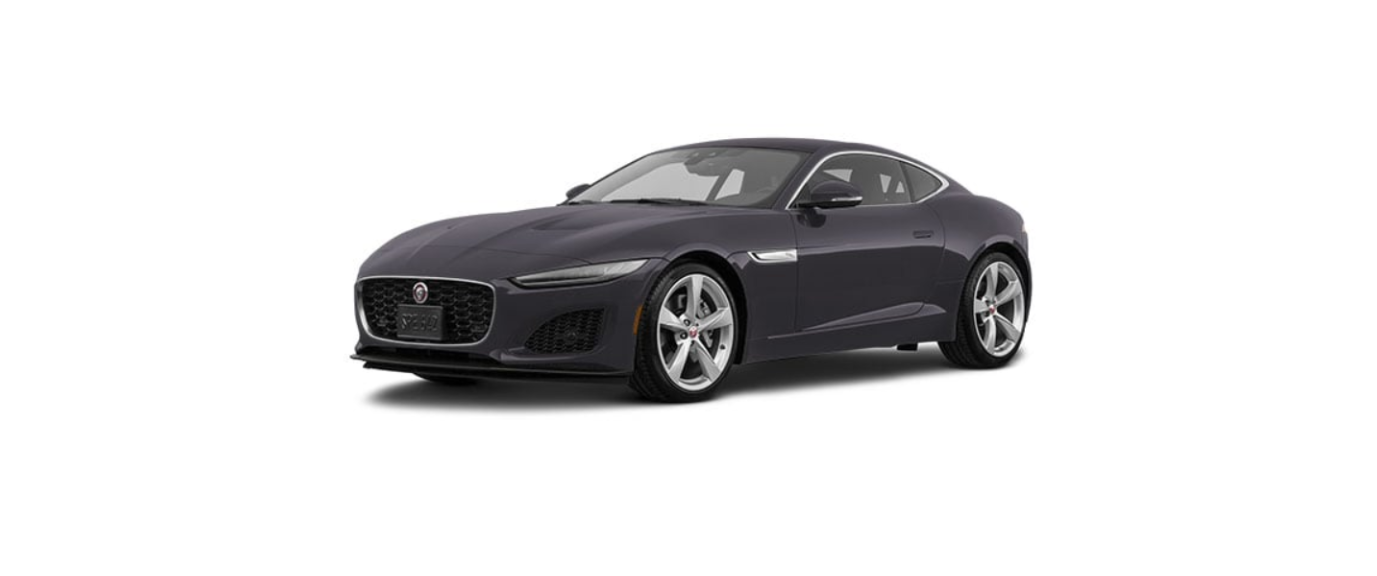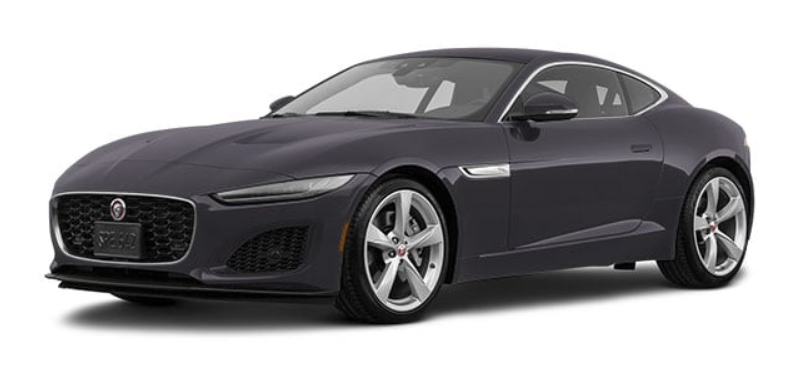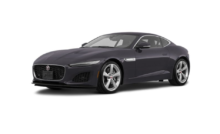2022 Jaguar F-TYPE Child Safety Owners Manual




2022 Jaguar F-TYPE Child Safety


CHILD SEAT SAFETY
Make sure to read and fully understand the relevant warnings before using any of the features in this section. Failure to observe warnings and cautions may result in vehicle damage, injury, or DEATH in the event of an accident.
Always follow the instructions that accompany the child seat carefully.
Always use a child restraint or booster seat appropriate to the age and size of a child.
Always wear seat belts or use suitable child restraints, for every trip, no matter how short.
Always securely store a head restraint, if removing it in order to fit a child restraint.
Always refit a removed head restraint after a child restraint is removed.
Always make sure the child restraint is correctly anchored.
Never use a forward-facing child restraint until the child using it is above 20 lb (9 kg), and able to sit up unaided. Up to the age of two, a child’s spine and neck are not sufficiently developed to avoid injury in a frontal impact.
Never allow a baby or infant to be held or carried on the lap. The force of a crash can increase effective body weight by as much as thirty times, making it impossible to hold onto the child.
CHILD SEAT OVERVIEW
Make sure to read and fully understand the relevant warnings before using any of the features in this section. See CHILD SEAT SAFETY.
All infants and children should be restrained in a suitable child safety seat. The child safety seat should be appropriate to the age and size of the infant or child.
CHILD SEAT POSITIONING
Make sure to read and fully understand the relevant warnings before using any of the features in this section. See CHILD SEAT SAFETY
Crash statistics show that children are safest when properly secured in a child restraint system appropriate for the age and weight of the child, in a rear seating position. Failure to use an appropriate restraint system greatly increases the risk of serious injury or death in the event of an accident.
The legislation which governs how and where children should be carried when traveling in a vehicle is subject to change. The driver is responsible for making sure that all regulations in force are complied with.
VEHICLE SPECIFIC INFORMATION
Make sure to read and fully understand the relevant warnings before using any of the features in this section. See CHILD SEAT SAFETY.
Extreme hazard! Never place a rearward-facing child restraint on the front passenger seat. The infant could be seriously injured or killed if the airbag deploys.
Always follow the instructions provided by the manufacturer of the child restraint system.
Make sure the child seat fits the child properly. Always check the child restraint system manufacturer’s instructions and labels for height and weight limits.
BOOSTER SEATS
Make sure to read and fully understand the relevant warnings before using any of the features in this section. See CHILD SEAT SAFETY A child may be too large to fit into a child’s safety seat, but too small to safely fit the vehicle’s seat belt. In these circumstances, it is recommended that a booster seat is used for maximum safety. Follow the manufacturer’s instructions for the fitting and use of the booster seat. Adjust the vehicle’s seat belt accordingly.
CHILD RESTRAINT CHECKLIST
Make sure to read and fully understand the relevant warnings before using any of the features in this section. See CHILD SEAT SAFETY
Every time a child travels in the vehicle, observe the following:
- Prior to driving, check that the passenger airbag’s status indicator lamp indicates that the passenger airbag is deactivated. See OCCUPANT SENSING.
- Carefully follow the instructions provided by the manufacturer of the restraint system.
- Always use the appropriate child restraints and adjust the harnesses for every child, on every trip.
- Make sure that a child falls into the correct weight range for the seat.
- Avoid dressing a child in bulky clothing. Do not place any objects between the child and the restraint system.
- Regularly check the fit of a child’s seat. Replace child seats or harnesses that show signs of wear.
- Make sure that all the slack is removed from the adult seat belt.
- Make sure that any belt positioning sliders on the seat belts are adjusted such that there is no slack in the lap belt after fastening.
- No child seat is completely child-proof. Encourage a child not to play with the buckle or harness.
- While driving, periodically check that the Passenger airbag status indicator lamp indicates that the Passenger airbag is deactivated. See OCCUPANT SENSING.
- If the Indicator lamp ceases to show that the Passenger airbag is deactivated, check the child seat installation.
- Never leave a child unsupervised in the vehicle.
- Set a good example and always wear a seat belt.
- When using a seat belt to secure a non-LATCH child restraint, make sure the seat belt’s locking mechanism is used.
CHILD SAFETY INFORMATION
Make sure to read and fully understand the relevant warnings before using any of the features in this section. See CHILD SEAT SAFETY.
Extreme hazard! Never place a rearward-facing child restraint on the front passenger seat. The infant could be seriously injured or killed if the airbag deploys.
Child restraint systems are designed to be secured in vehicle seats by use of lap belts or the lap belt portion of a lap-shoulder belt. Children could be endangered in a crash if their child restraints are not properly secured.
A child should only travel in the front passenger seat if it is essential and national or state legislation permits it. If this is the case, it is recommended that the following preparations are made before fitting the child restraint:
- Adjust the seat to the rearmost position.
- Adjust the seat cushion to the highest position.
- Adjust the seatback to the optimum upright position to support the child’s seat.
- Adjust any lumbar support to the minimum support position.
- Adjust any cushion extenders to the fully retracted position.
WARNING LABELS
Make sure to read and fully understand the relevant warnings before using any of the features in this section. See CHILD SEAT SAFETY.
Extreme hazard! Never place a rearward-facing child restraint on the front seat. The infant could be seriously injured or killed if the airbag deploys.
The above label is affixed to the passenger’s side sun visor. The label warns against the use of a rear-facing child seat in the front passenger’s seat when a front passenger airbag is fitted and operational.
Never let a child’s head rest near a front-seat side airbag, as an inflating airbag can cause serious or fatal injury.
The above label is affixed to both B pillars. The label warns against a child sitting too close to the front seat side airbag.
FITTING A NON-LATCH CHILD RESTRAINT
Make sure to read and fully understand the relevant warnings before using any of the features in this section. See CHILD SEAT SAFETY.
Child restraints should not be fitted to the front passenger seat. However, if the situation is unavoidable, a number of steps and checks should be taken. See CHILD SAFETY INFORMATION. Also, see CHILD RESTRAINT CHECKLIST.
To fit a non-LATCH child restraint:
- Place the child restraint in the vehicle, attach the seat belt, and secure the buckle in accordance with the manufacturer’s fitting instructions.
- Pull on the shoulder section of the belt to unreel all of the remaining webbings to the limit of their travel. The automatic locking feature engages and acts as a ratchet, only allowing the webbing to retract.
- Allow the seat belt to retract onto the child restraint, while firmly pushing the restraint into the vehicle’s seat. A clicking sound confirms that the ratchet has engaged.
- Make sure that there is no slack in the seat belt by pulling upward on the shoulder belt immediately above the child restraint. The seat belt should now be locked and the child restraint held firmly in position.
When the child restraint is removed and all of the seat belt webbings are allowed to retract, the seat belt locking mechanism reverts to normal operation.
FITTING TETHER ANCHORAGE CHILD RESTRAINTS
Make sure to read and fully understand the relevant warnings before using any of the features in this section. See CHILD SEAT SAFETY.
Always follow the child seat or restraint system manufacturer’s instructions when fitting tether straps. Failure to do so can greatly reduce the effectiveness of the child seat or restraint system in the event of an accident.
Convertible vehicles are not equipped with a tether anchorage point. Therefore, convertible vehicles are not suitable for use with a child seat, or restraint system, that requires a tether.
Coupe vehicles are equipped with a tether anchorage point behind the passenger seat. The tether anchorage point should be used to attach tether straps from the child seat or restraint system.
Before fitting the child restraint, the passenger seat must be in the correct position to allow correct adjustment of the tether straps. See CHILD SAFETY INFORMATION.
To fit a tether anchorage strap:
- Remove the cover to access the tether anchorage point.
- Fit the child restraint securely in the passenger seat, and pass the tether straps over the seat in the positions shown.
- Connect the tether straps to the tether anchorage point.
- Tighten the tether straps according to the manufacturer’s instructions.
Recent Posts
VW Jetta Engine Fuse Box Diagram
Access the comprehensive 2010-2018 VW Jetta Passenger Fuse Box Diagram to troubleshoot electrical issues effectively.…
VW Jetta Passenger Fuse Box Diagram
Explore the comprehensive VW Jetta Passenger Fuse Box Diagram to troubleshoot electrical issues effectively. Understand…
2023 Ford F-150 Lightning Fuse Box Diagram
Under Hood Fuse Box Location Remove the front luggage compartment cover. Under Hood Fuse Box…
2022 Kawasaki NINJA H2 SX SE Brake Lever Adjuster Owner’s Manual
2022 Kawasaki NINJA H2 SX SE Brake Lever Adjuster Owner's Manual NOTICE Only adjust the front…
2023 Land Rover Range Rover Evoque Exiting The Vehicle Owners Manual
2023 Land Rover Range Rover Evoque Exiting The Vehicle SINGLE LOCKING WARNING Before exiting the…
2023 Land Rover Range Rover Evoque Front Seats Owners Manual
2023 Land Rover Range Rover Evoque Front Seats FRONT SEAT SAFETY Make sure to read…
